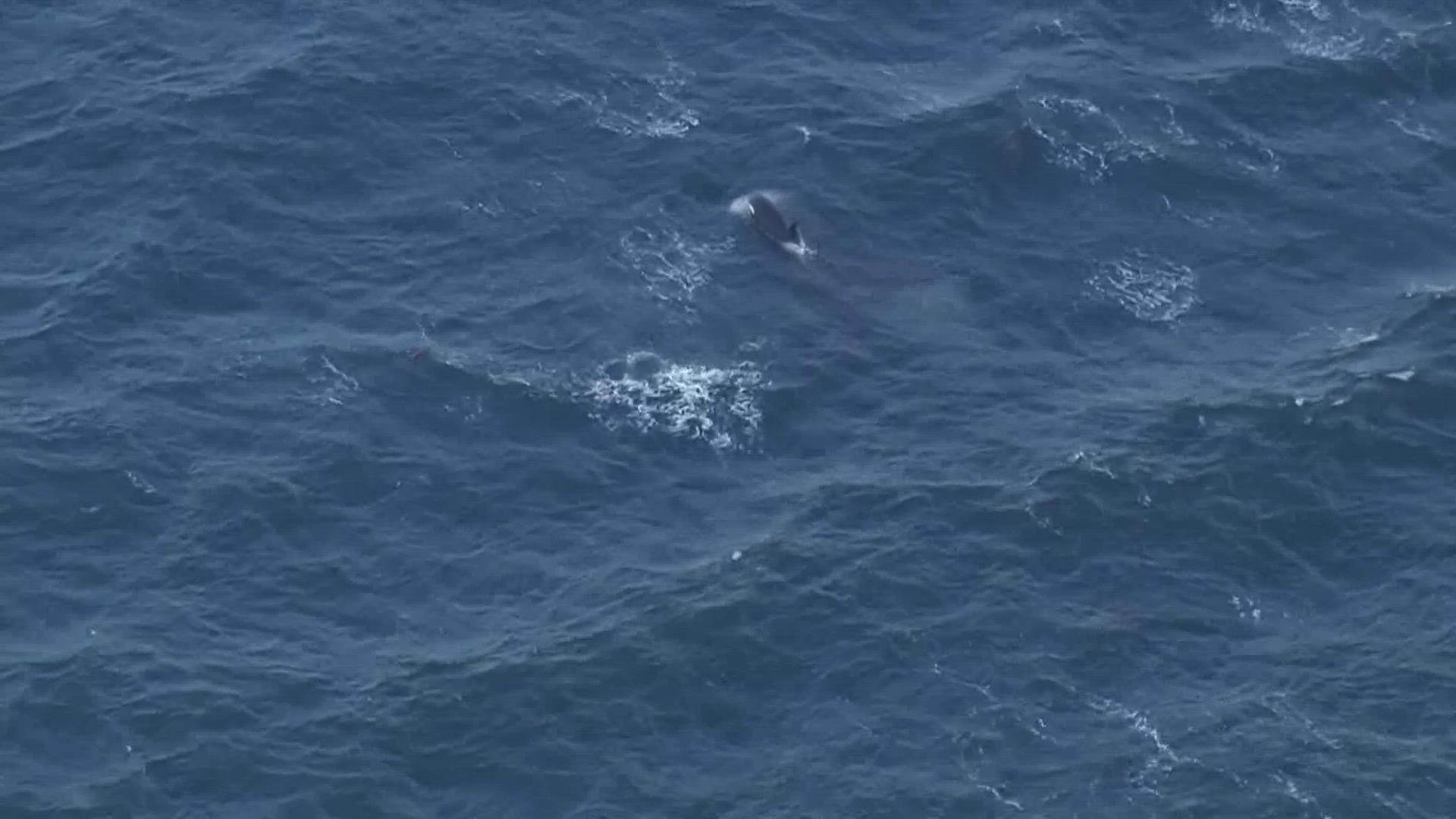SEATTLE — Fish and Wildlife officials are recommending that state lawmakers increase the required buffer around endangered Southern Resident orcas.
In a newly released report, the Washington Department of Fish and Wildlife (WDFW) recommends a 1,000-yard buffer for recreational boaters, commercial whale-watching operators and guided paddle tours.
Currently, boaters must stay at least 300 yards from Southern Resident killer whales (SRKW) and at least 400 yards out of the path in front of or behind them. Vessels are also required to reduce their speed to seven knots within a half mile of the SRKW.
WDFW cites the threats to the SRKW population and an analysis of the effectiveness of current rules in protecting the orcas as the reason for the new recommendation. This report was prompted by the passing of Senate Bill 5577, and similar reports will be produced in 2024 and 2026.
"We appreciate legislative leaders inviting an opportunity to reflect on our current statutes for recreational boaters and commercial whale watching operators," Julie Watson, Ph.D., WDFW's killer whale policy lead, said in a release. "Given the dire state of the Southern Resident killer whale population and the latest science on vessel impacts on foraging success, implementing the report's recommendation to update the buffer around Southern Residents would support recovery of this endangered population."
A census in September recorded the Southern Resident population at just 73, and over the summer 12 Southern Resident orcas were designated as vulnerable due to their body condition.
SRKW populations face three main threats: a lack of food, contaminants in their food, and vessel noise interfering with their communication and foraging.
The WDFW report does not suggest any changes for other, healthier populations, including Bigg’s or transient killer whales, humpback whales or gray whales.
Southern Residents mainly feed on salmon, while Bigg’s or transient orcas eat larger sea mammals, such as seals and sea lions.
The report only provides recommendations; state law will remain unchanged until legislators take action.
For more information on current rules around whale watching, visit the Be Whale Wise website.

